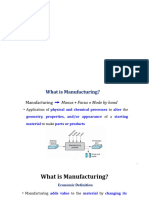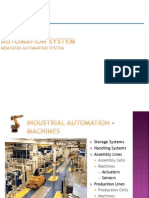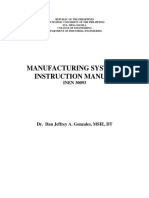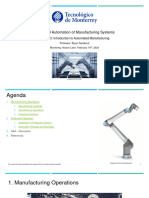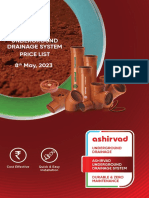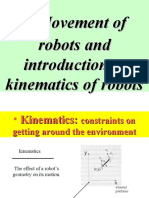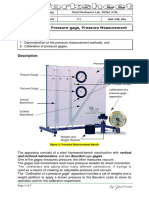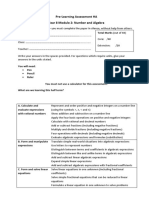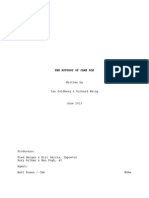21.08.
2024
� An automated production line is a
sequence of workstations connected by a
transfer system and an electrical control
system that performs a series of
automated operations.
� Increased Efficiency: Automated production lines
can operate continuously without the need for breaks,
resulting in higher production rates and faster
turnaround times compared to manual labor.
Consistency and Quality Control: Automation
ensures that each product is manufactured with the
same precision and quality, reducing the likelihood of
defects and ensuring uniformity in production.
Cost Reduction: Although the initial investment in
automation technology can be high, over time, it leads
to significant cost savings by reducing labor costs,
minimizing material waste, and lowering energy
consumption.
� Improved Safety: Automation reduces the need for human
workers to perform hazardous tasks, thereby lowering the
risk of workplace accidents and injuries.
Scalability: Automated production lines can be easily
adjusted to scale up or down depending on demand, making
it easier for companies to respond to market changes.
Data Collection and Analysis: Automated systems often
include sensors and data collection tools that provide
valuable insights into the production process, helping to
optimize performance and make informed decisions.
Competitiveness: Companies that implement automated
production lines often gain a competitive edge by being able
to produce goods faster, cheaper, and with better quality than
their competitors.
�Craftsmanship Era (Pre-18th
Century):
◦ Before the Industrial Revolution,
manufacturing was primarily done by skilled
craftsmen using manual tools. Production was
slow, and each item was often unique.
�Mechanization of Manufacturing:
The Industrial Revolution brought about
the introduction of machinery powered
by steam engines. Factories started to
emerge, and production became more
centralized and efficient.
�First Assembly Line by Eli Whitney
(Early 1800s):
Eli Whitney is often credited with the
concept of interchangeable par ts in
f i re a r m p ro d u c t i o n , w h i c h l a i d t h e
fo u n d a t i o n fo r l a t e r a s s e m b ly l i n e
concepts. This allowed for mass
p ro d u c t i o n a n d e a s i e r a s s e m b ly o f
products.
� Henry Ford’s Assembly Line (1913):
◦ Henry Ford revolutionized manufacturing by
introducing the moving assembly line at the Ford
Motor Company in 1913. This innov ation
significantly reduced the time it took to build a
car from 12 hours to just 2.5 hours.
◦ The assembly line used conveyor belts to move
parts and assemblies from one workstation to
another, with each worker performing a specific
task. This method greatly increased production
efficiency and made products more affordable.
� Introduction of Programmable
Machines:
◦ After World War II, the development of more
advanced machinery and control systems
began, including early programmable machines
that could perform repetitive tasks without
human intervention.
◦ The concept of Numerical Control (NC)
machines emerged, allowing for more precise
and automated control of manufacturing
processes.
�◦ The 1960s saw the advent of computers and
their application in manufacturing. The first
Programmable Logic Controllers (PLCs) were
introduced in the late 1960s, enabling more
complex automation of production lines.
� Adoption of Robotics:
◦ In the 1970s, robots began to be integrated into
production lines, especially in the automotive industry.
These robots could perform tasks like welding,
painting, and assembly, further reducing the need for
human labor in repetitive tasks.
Computer-Integrated Manufacturing
(CIM):
◦ The concept of CIM emerged, where all aspects of
manufacturing were integrated and controlled by
computer systems. This included design (CAD),
manufacturing (CAM), and quality control systems,
leading to more efficient and flexible production lines.
� Smart Factories and IoT:
◦ The 21st century has seen the rise of Industry 4.0,
characterized by the use of cyber-physical
systems, Internet of Things (IoT), and artificial
intelligence in manufacturing. Automated
production lines are now highly flexible, able to
adapt to varying products and production
volumes.
Advanced Robotics and AI:
◦ Modern production lines use advanced robotics
and AI to optimize every aspect of manufacturing,
from real-time quality control to predictive
maintenance.
� Machinery and Workstations
Robots:
◦ Industrial Robots: Perform tasks such as welding,
painting, assembling, and material handling with high
precision.
◦ Collaborative Robots (Cobots): Work alongside
human operators, often in tasks that require flexibility and
human-robot collaboration.
Specialized Machines:
◦ CNC Machines: Computer Numerical Control machines
that perform precise machining tasks like cutting, drilling,
and milling.
◦ Automated Assembly Machines: Assemble parts or
products automatically, often using robotic arms or
specialized jigs.
�� Conveyors:
◦ Used to transport materials, components, or
products between different stations on the
production line. Common types include belt
conveyors, roller conveyors, and chain conveyors.
Automated Guided Vehicles (AGVs):
◦ Mobile robots that transport materials around the
factory floor without the need for fixed pathways,
allowing for greater flexibility.
Pick and Place Systems:
◦ Robotic systems designed to pick up components
from one location and place them in another, often
used in assembly or packaging.
���� Programmable Logic Controllers (PLCs):
◦ The central control units that manage the operation of the
production line, coordinating the various machines and
systems to ensure smooth and synchronized workflow.
Human-Machine Interfaces (HMIs):
◦ Interfaces that allow operators to monitor and control the
production line, providing real-time data on performance,
diagnostics, and system status.
Supervisory Control and Data Acquisition
(SCADA) Systems:
◦ Used for real-time monitoring and control of industrial
processes. SCADA systems collect data from sensors and
machines, allowing operators to oversee the entire
production process.
���� Proximity Sensors:
◦ Detect the presence or absence of components in
specific areas, ensuring proper alignment and
positioning in the production process.
Vision Systems:
◦ Cameras and image-processing software used for
quality inspection, ensuring that products meet
specified standards before proceeding to the next
stage.
Pressure and Temperature Sensors:
◦ Monitor environmental and operational conditions to
maintain optimal production settings and prevent
equipment malfunctions.
�� Power Supply and Distribution
Electric Power Systems:
◦ Provide the necessary power to run all
machinery, robots, and control systems on the
production line.
Compressed Air Systems:
◦ Often used to power pneumatic actuators,
tools, and other equipment in the production
line.
� Software Systems
Computer-Aided Design (CAD) and
Manufacturing (CAM) Software:
◦ CAD software is used for designing products,
while CAM software translates these designs into
instructions for the production machines.
Manufacturing Execution Systems
(MES):
◦ MES software tracks and manages the production
process in real-time, from raw material
acquisition to the finished product, ensuring that
production goals are met.
� Safety Systems
Safety Fencing and Barriers:
◦ Physical barriers that protect workers from entering
hazardous areas of the production line where robots
or machinery are operating.
Emergency Stop Systems:
◦ Allows operators to immediately halt the production
line in case of an emergency, preventing accidents and
equipment damage.
Light Curtains and Safety Sensors:
◦ Detect the presence of objects or people in
dangerous zones, automatically stopping machines if
an obstruction is detected.
� Data Collection and Analytics
IoT Devices:
◦ Internet of Things devices that collect data
from various points in the production line,
enabling real-time monitoring and predictive
maintenance.
Data Analytics Platforms:
◦ Analyze collected data to optimize production
efficiency, reduce downtime, and improve
overall system performance.
� Enterprise Resource Planning (ERP)
Integration:
◦ Connects the production line with broader
business processes such as inventor y
management, order processing, and supply chain
management, ensuring a seamless flow of
information across the organization.
Cloud Computing and Edge
Computing:
◦ Cloud-based systems store and process data
remotely, while edge computing processes data
closer to the source, allowing for faster decision-
making and reduced latency.
�� Layout Design
Linear Configuration:
◦ In a linear layout, workstations are arranged in a straight line. Materials move
sequentially from one station to the next, which is common in high-volume production
where the process is straightforward and repetitive.
U-Shaped Configuration:
◦ This layout allows for more efficient use of space and better communication between
different stages of the production process. It also facilitates easier supervision and
handling of materials.
Cellular Layout:
◦ In this configuration, production is divided into cells, each responsible for a specific set
of tasks or products. This layout is flexible and allows for quick reconfiguration to
accommodate different product lines or changes in demand.
Modular Configuration:
◦ A modular layout uses standardized units or modules that can be rearranged or
replaced independently. This approach offers high flexibility and is ideal for
environments where frequent changes are expected.
�� Selection of Machinery and Equipment
Workstations and Machines:
◦ Identify and select the appropriate machinery for
each stage of production. This includes robots, CNC
machines, assembly stations, and quality control
systems. The choice depends on the specific tasks
required and the level of precision needed.
Material Handling Equipment:
◦ Choose the right conveyors, AGVs (Automated
Guided Vehicles), or robotic arms for transporting
materials and products between stations. The
selection should consider factors such as speed, load
capacity, and the nature of the materials being handled.
� Control System Architecture
Centralized Control:
◦ A single central controller (often a PLC) manages all
operations in the production line. This simplifies
coordination but may present a single point of failure.
Distributed Control:
◦ Each workstation or machine has its own controller, with
overall coordination managed by a higher-level system. This
approach offers greater reliability and scalability, as
individual stations can operate independently.
Hybrid Control:
◦ Combines elements of both centralized and distributed
control. Critical operations may be centrally managed,
while less critical tasks are handled locally at each station.
� Integration of Sensors and Feedback
Mechanisms
Real-time Monitoring:
◦ Install sensors throughout the production line to
monitor key parameters such as temperature,
pressure, position, and quality. These sensors provide
real-time data to the control system, enabling quick
adjustments.
Feedback Loops:
◦ Implement feedback mechanisms to automatically
correct deviations from desired operating conditions.
For example, if a sensor detects a misaligned part, the
system can adjust the positioning or alert an operator.
� Software and Data Management
PLC Programming:
◦ Develop and program PLCs to control machinery and automate the
production process. PLCs execute predefined sequences of operations
based on inputs from sensors and commands from the control system.
Human-Machine Interface (HMI):
◦ Design and configure HMI panels to allow operators to monitor and
control the production line. The HMI provides a user-friendly interface
for adjusting settings, viewing diagnostics, and responding to alerts.
Manufacturing Execution System (MES):
◦ Integrate MES software to manage and track production in real-time.
MES coordinates the flow of materials, monitors production progress,
and ensures compliance with production schedules.
Data Analytics and IoT:
◦ Use IoT devices and data analytics tools to collect and analyze data
from the production line. This information can be used to optimize
operations, predict maintenance needs, and improve overall efficiency.
� Safety and Compliance
Safety Systems:
◦ Configure safety barriers, light curtains, and
emergency stop systems to protect workers and
equipment. Ensure all safety measures comply
with relevant industry standards and regulations.
Compliance and Standards:
◦ Ensure that the production line configuration
adheres to industry-specific standards and
regulatory requirements, such as ISO
certifications, safety standards, and environmental
regulations.
� Power and Utility Management
Power Distribution:
◦ Design a reliable power distribution network that
can support the energy demands of the
production line. Include backup power systems to
prevent disruptions in case of power outages.
Compressed Air and Hydraulics:
◦ Configure compressed air and hydraulic systems
as needed for powering pneumatic and hydraulic
machinery. Ensure that these systems are
properly integrated into the overall control
architecture.
� Testing and Simulation
Virtual Simulation:
◦ Before physical implementation, use simulation
software to model the production line. This
allows for the identification and resolution of
potential issues, optimization of workflows, and
validation of system performance.
Pilot Testing:
◦ Conduct pilot runs of the production line to test
the configuration in a real-world setting. Use this
phase to fine-tune the system, train operators,
and ensure that all components work together as
expected.
� Scalability and Flexibility
Modular Design:
◦ Design the system to be modular, allowing for
easy expansion or reconfiguration. This is
particularly important in industries where
product lines or production volumes may change
frequently.
Reconfigurable Systems:
◦ Implement flexible control systems and
machinery that can be easily reprogrammed or
adjusted to handle different products or
processes. This adaptability is crucial for
maintaining competitiveness in dynamic markets.
� Scalability and Flexibility
Modular Design:
◦ Design the system to be modular, allowing for
easy expansion or reconfiguration. This is
particularly important in industries where
product lines or production volumes may change
frequently.
Reconfigurable Systems:
◦ Implement flexible control systems and
machinery that can be easily reprogrammed or
adjusted to handle different products or
processes. This adaptability is crucial for
maintaining competitiveness in dynamic markets.


